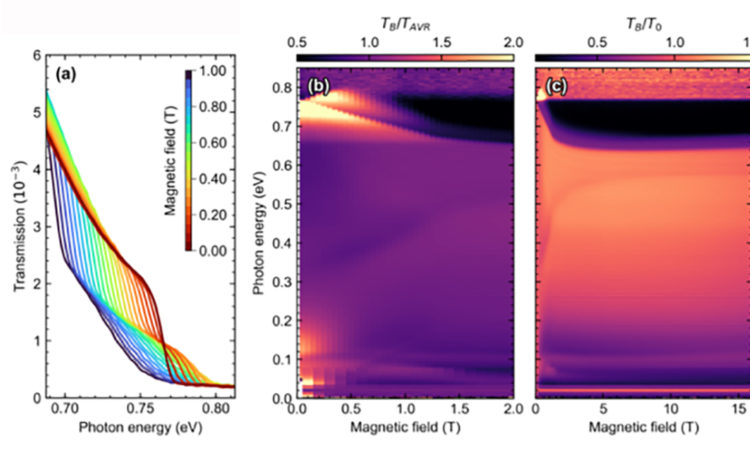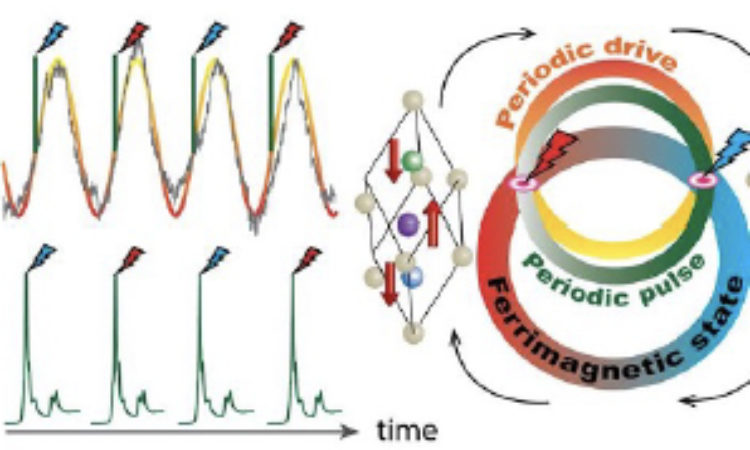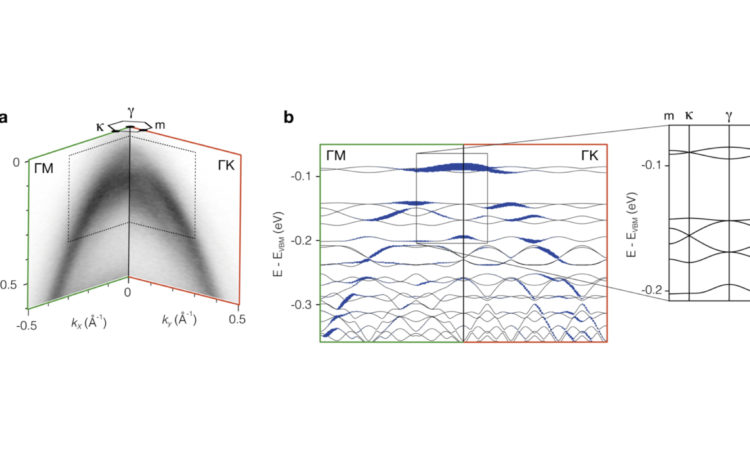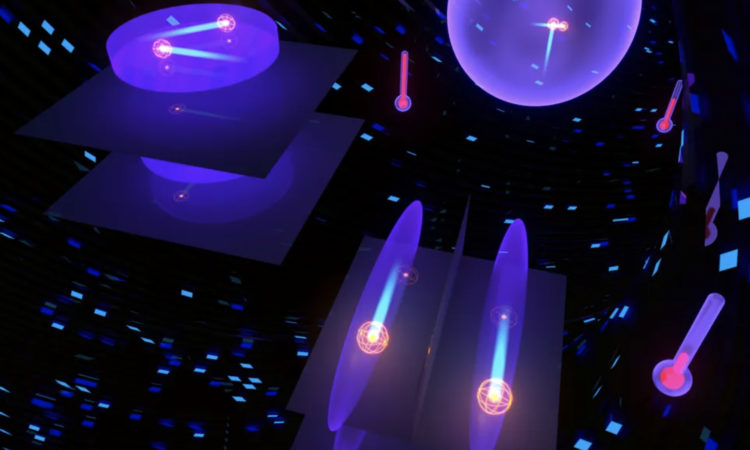Tuning magnetic spirals with chemical disorder beyond room temperature
In the past years, magnetism-driven ferroelectricity has been reported in a number of frustrated magnets with spiral magnetic orders. Such materials are of high current interest due to their potential for spintronics and low-power magnetoelectric devices. However, their low magnetic order temperatures (typically <100K) restrict their fields of application. Scientists at the Paul Scherrer Institut have recently showed that chemical disorder, often detrimental for long range magnetic order, can be used to manipulate magnetic frustration and stabilize magnetic spirals at higher temperatures. In the layered perovskite YBaCuFeO5, this novel mechanism was successfully used to increase the spiral order temperature from 154 to 310K.

By Mickaël Morin and Marisa Medarde, Paul Scherrer Institut
Based on article published in Nature Communications
Spiral magnets have been studied since decades in the context of frustrated magnetism. In insulating transition metal oxides, this unusual kind of magnetic order often arises as the result of the competition between next (J) and next-nearest (J’) neighbor superexchange interactions. The order temperature Tspiral is determined by the ratio J’/J, but J’ tends to be very small in this kind of materials. This leads naturally to low order temperatures, and very few materials having demonstrated spiral magnetic order above 100K.

In parallel to their interest in fundamental physics, magnetic spirals are now also on the focus of applied sciences due to their potential for inducing ferroelectricity. This can be achieved through several spin-lattice microscopic mechanisms, all of them based in the optimization of the magnetic order through charge displacements that respect the symmetry of the underlying magnetic structure. Such coupling between magnetism and ferroelectricity on a single material is a promising avenue for the design of low-power computer digital memories. However, an important requisite is that these two physical properties exist at normal device operation temperatures. This condition is unfortunately not fulfilled by most spiral magnetoelectrics, which are predominantly insulating transition metal oxides with spiral order temperatures well below ambient (typically < 40K).
Our group at the Paul Scherrer Institute has developed an original method to stabilize magnetic spirals beyond RT which was recently published in Nature Communications [1]. The method, based in the use of chemical disorder as a tool to manipulate magnetic frustration, was applied to the layered perovskite YBaCuFeO5 (Fig. 1a). This material displays two magnetic transitions at temperatures TN1 and TN2 [2].
The high temperature phase is antiferromagnetic and collinear (Fig. 1b), but it transforms into an inclined circular spiral below TN2 (Fig. 1c). The crystal structure, shown in Fig. 1a, is characterized by the presence of Fe3+/Cu2+ occupational disorder in the pyramidal sites, and this disorder was found to have an enormous impact in the stability of the two ordered magnetic phases present in YBaCuFeO5 (Fig. 1d).
In order to change the degree of Fe3+/Cu2+ disorder in a systematic way we used different cooling rates for the preparation of the samples. Then, we investigated the impact in the magnetic structures using bulk magnetization and neutron powder diffraction at the Swiss Neutron Source (Figs. 1e and 1f, ref. [1]). The obtained results indicated that disorder changes very little the energy scale responsible for the paramagnetic-to-collinear AFM transition at TN1. However, it dramatically increases the degree of frustration and the related collinear-to-spiral transition at TN2. As a result, the stability range of the spiral phase could be extended by more than 150 K and its upper limit pushed beyond room temperature at zero magnetic field (Fig. 1d). Other characteristics of the spiral, such as the periodicity and inclination of the rotation plane, could also be tuned by changing the cooling rate. These findings show that this novel mechanism can be effectively used to engineer the properties of a magnetic spiral, including its wavelength, orientation and stability range. Theorists at the PSI and the Materials department of the EHZ have recently rationalized these results through a random-exchange-based model which explicitly takes into account the role of disorder [3, 4]. Altogether, these experimental and theoretical works suggest that chemical disorder may be a promising route for the design of other spiral magnets with magnetoelectric properties beyond room temperature, paving the way for the future use of these materials in technological applications based in the magnetoelectric effect.
REFERENCES
[1] Tuning magnetic spirals beyond room temperature with chemical disorder
Morin, E. Canevet, A. Raynaud, M. Bartkowiak, D. Sheptyakov, V. Ban, M. Kenzelmann, E. Pomjakushina, K. Conder and M. Medarde
Nature Communications 7, 13758 (2016)
[2] Incommensurate magnetic structure, Fe/Cu chemical disorder and magnetic interactions in the high-temperature multiferroic in YBaCuFeO5
Morin, A. Scaramucci, M. Bartkowiak, E. Pomjakushina, G. Deng, D. Sheptyakov, L. Keller, J. Rodriguez-Carvajal, N.A. Spaldin, M. Kenzelmann, K. Conder and M. Medarde
Phys. Rev. B 91, 064408 (2015)
[3] Multiferroic magnetic spirals induced by random magnetic exchanges.
Scaramucci, H. Shinaoka, M.V. Mostovoy, M. Müller, C. Mudry, M. Troyer, and N.A. Spaldin
Preprint at http://arxiv.org/abs/1610.00783 (2016).
[4] Spiral order from orientationally correlated random bonds in classical XY models.
Andrea A. Scaramucci, H. Shinaoka, M.V. Mostovoy, M. Müller, and C. Mudry
Preprint at http://arxiv.org/abs/1610.00784 (2016)
Contact: Marisa Medarde, (Tel. +41 56 310 32 83)



